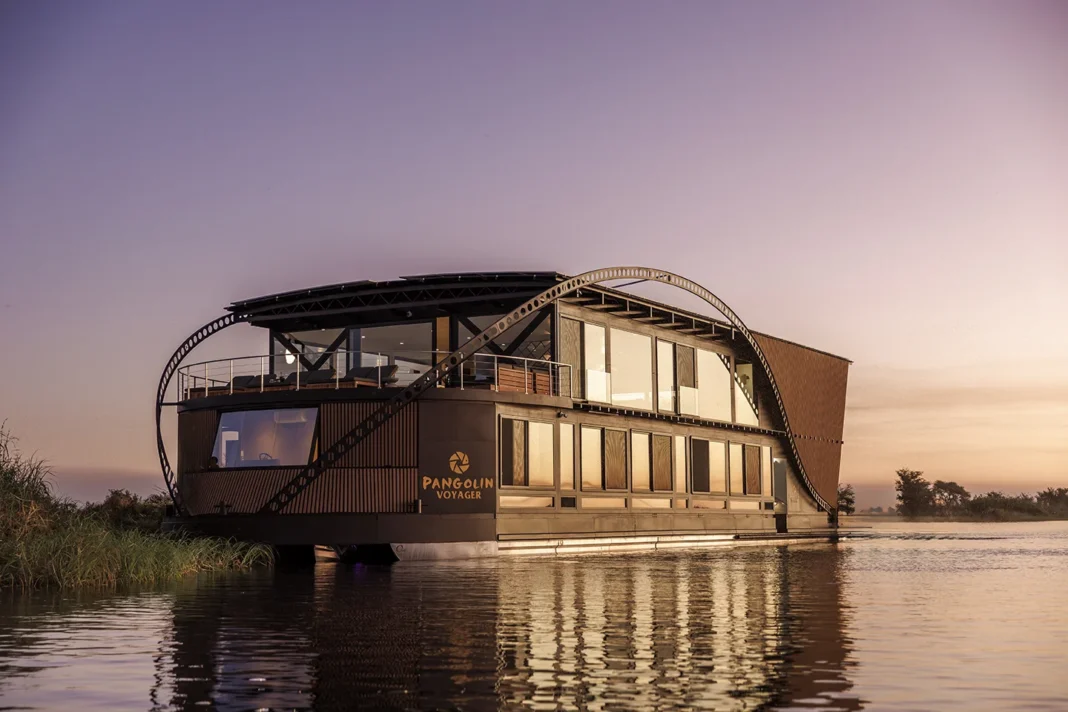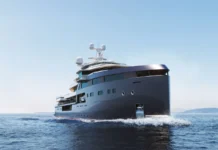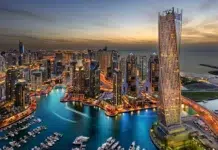I’ve always wanted to go on a guided photographic safari, so when the opportunity presents itself to experience it firsthand, I pack my bags and camera gear and head to Kasane in Botswana. Arriving in the afternoon, I’m excited to learn more about photography with Pangolin Photo’s Best of the Chobe package. This is the ideal learning school for both novice and professional photographers. Guests without cameras are provided with Canon mirrorless camera bodies and Canon telephoto lenses. We make a brief stop at the Pangolin Chobe Hotel before being driven to the jetty in an open safari vehicle. Our passports need to be stamped at both the Botswana and Namibian immigration counters. We will be alternating between the waters (borders) of these two countries.
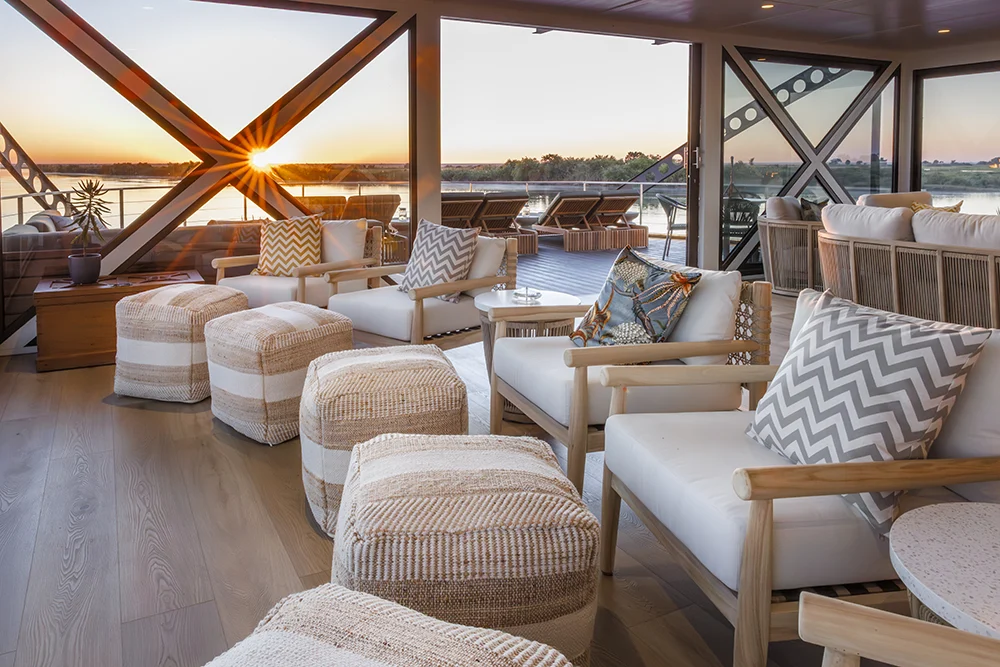
Moored on the Namibian side of the Chobe River, the Pangolin Voyager is an engineering masterpiece. Launched in 2025, the vessel replaced the first Pangolin Voyager, which served for two decades on the river. “We bought her back in 2015,” Pangolin Photo Safaris Director Toby Jermyn tells me. “The boat was previously known as the Zambezi Voyager and the Nguni Voyager before that. In 2008, which was three years before my business partner Gerhard ‘Guts’ Swanepoel and I started Pangolin, I was traveling through the Chobe. I met up with my mom, who came to visit from the UK. We spent three nights on the Nguni Voyager. Roll on to 201,5 and we had the opportunity to buy the Pangolin Voyager. This was our first venture into having a houseboat on the Chobe.”
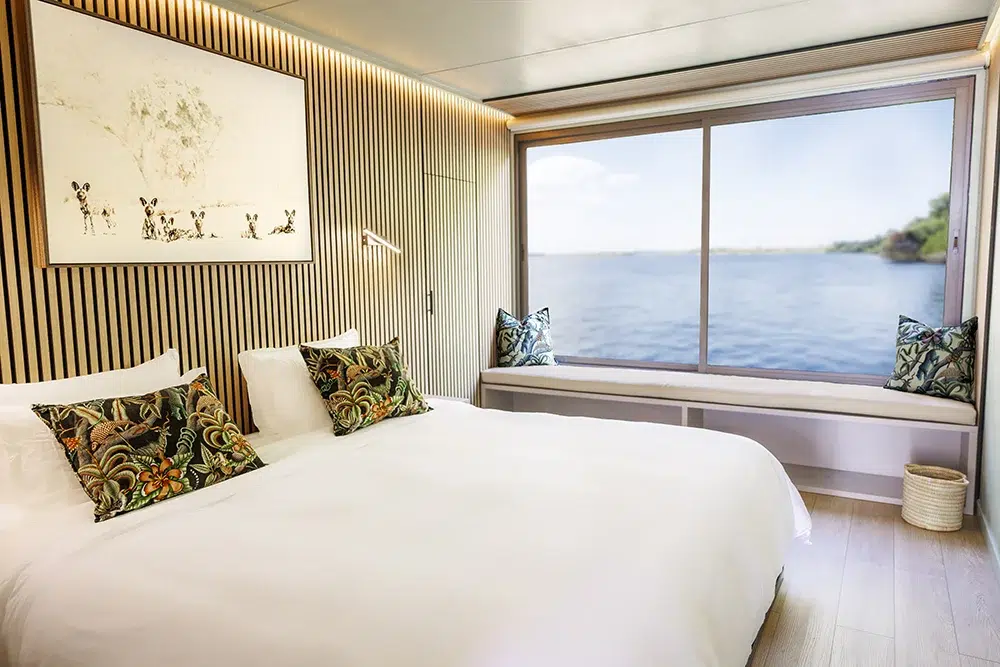
With the original Pangolin Voyager reaching the end of her service life, she will be moored in a channel just off the Chobe. She will be used for storage and staff accommodation. Toby admits that his mom was so excited when they bought the new houseboat, she immediately came to visit. He enthusiastically shares that they will be celebrating her 80th birthday with a party on the Pangolin Voyager in 2027.
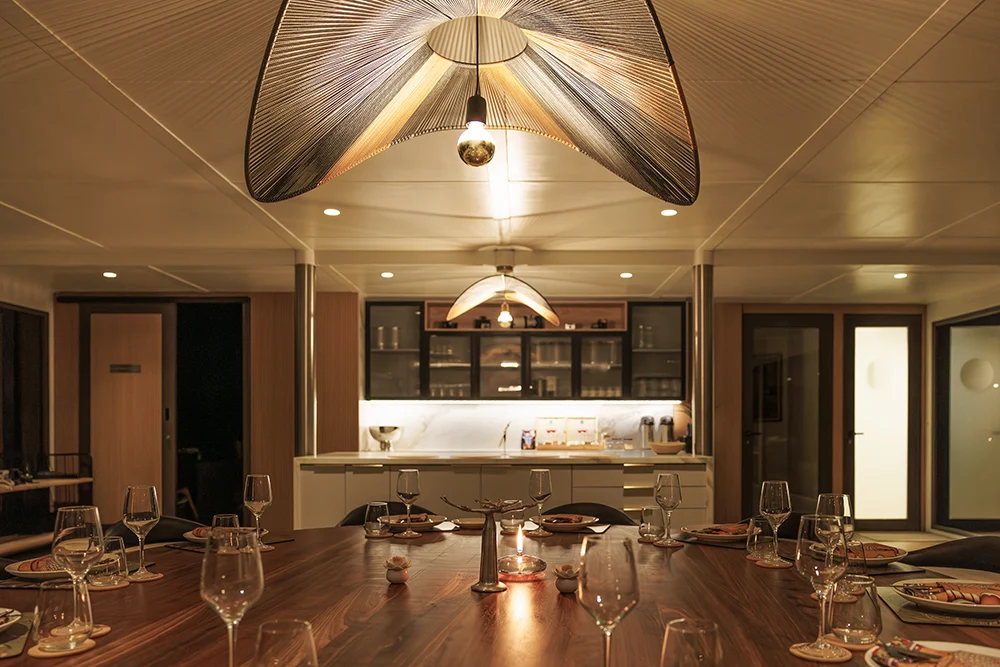
Realizing that a replacement was needed for the existing Pangolin Voyager, the possibilities were endless. Starting from the ground up, the design crew knew they needed a large, stable platform. They could build up from that. “We wanted to make it much lighter than the existing Pangolin Voyager,” Toby says. “It was built from aluminium as opposed to steel. A company called Edelstahlbau in Windhoek built the new houseboat.”
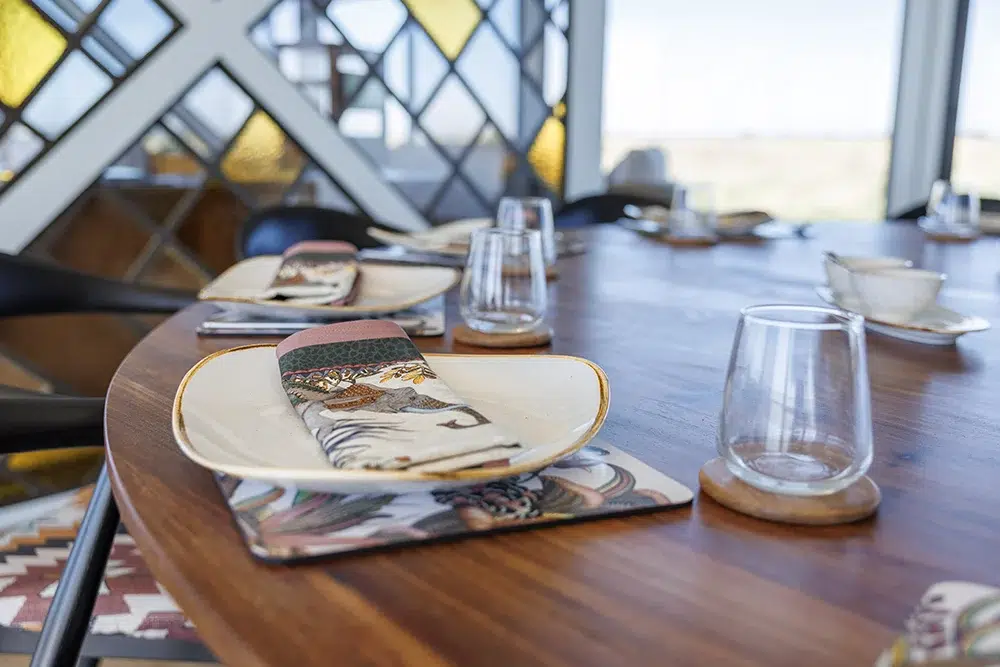
“Edelstahlbau built the ferry that goes between Impalila Island and Kasane,” Toby continues. “We contacted them using the basis that the ferry is also a trimaran. We then had a platform on which we could build. The idea of being solar came very early on. If we only had two floors as opposed to three on the old Voyager, we would have a very large surface area on top of the roof. This would be ideal for solar panels, which meant we could run everything electric.”
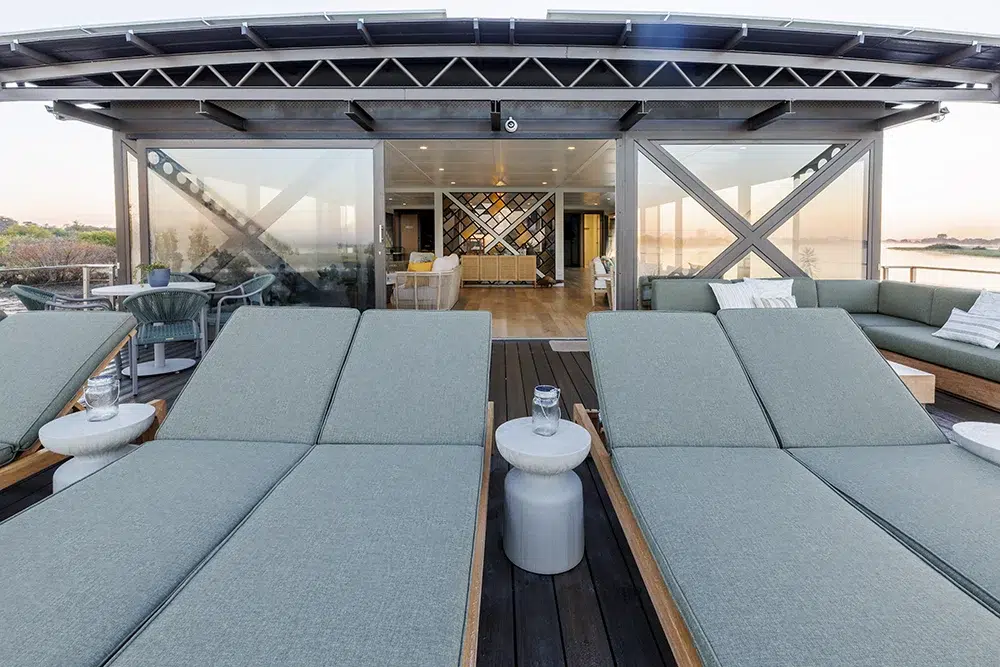
It dawned on the team rather quickly that enough electricity was going to be produced through the solar panels. They could look at electric motors and run air-conditioning, lighting, fans, and fridges. Toby and Guts approached a UK company called RAD Propulsion, which makes the most extraordinary state-of-the-art electric drives. Working with them and Edelstahlbau, they concocted the idea of having the houseboat move using electric drives as well.
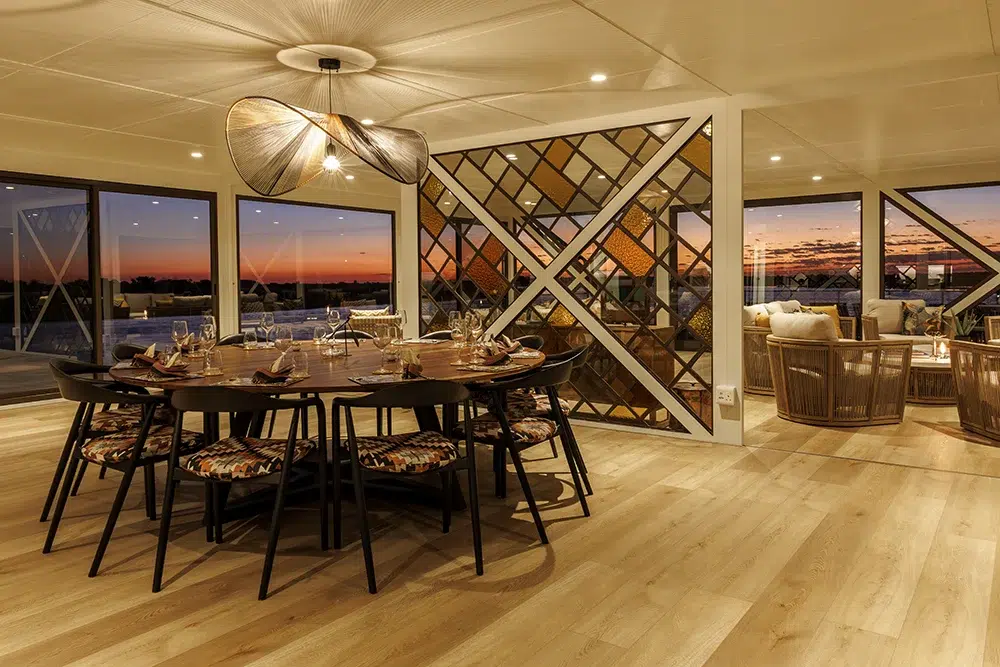
For Toby and the entire Pangolin Photo Safari company, the new vessel is undoubtedly a dream come true. From fruition to launch, it took around two and a half years. Revolutionary technology and engineering ingenuity paved the way in making the Pangolin Voyager one of a kind. Overcoming a number of hurdles and problems in the construction phase made the journey even sweeter.
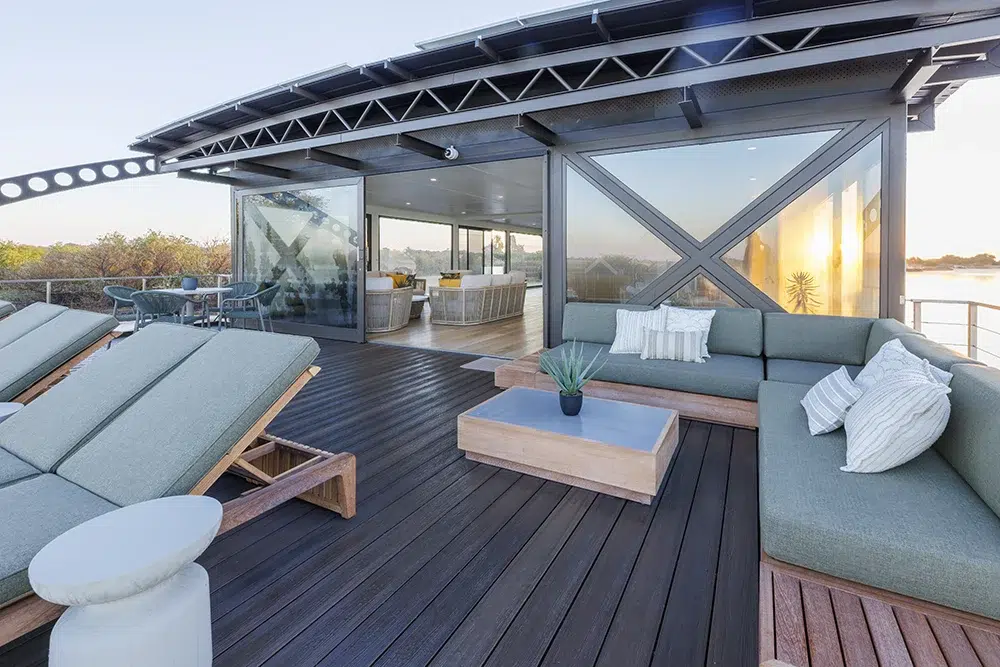
“The design itself was very much a team effort from everyone at Pangolin,” Toby concludes. “We knew we wanted to make it look really modern and very cool. To make the houseboat in the shape of a Pangolin would be an amazing feature. We had loads of fun playing around with drafts. It’s evident that we’re all very pleased with the way it turned out. She’s a thing of beauty.”
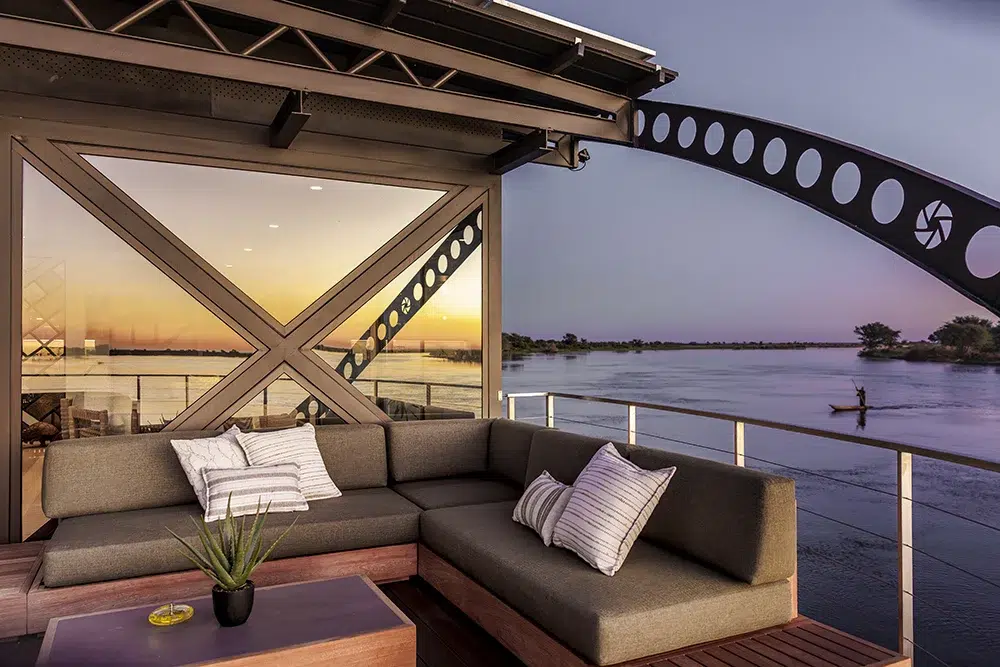
The exterior was designed with input from everyone involved with Pangolin Photo Safaris. For the construction of the feature beam, which is in the shape of a Pangolin, the assistance of Edelstahlbau was called in. Claire Christie was responsible for the stunning interiors. She managed to source as many elements as possible from Namibia, with the exception of the instantly recognizable Ardmore touches.
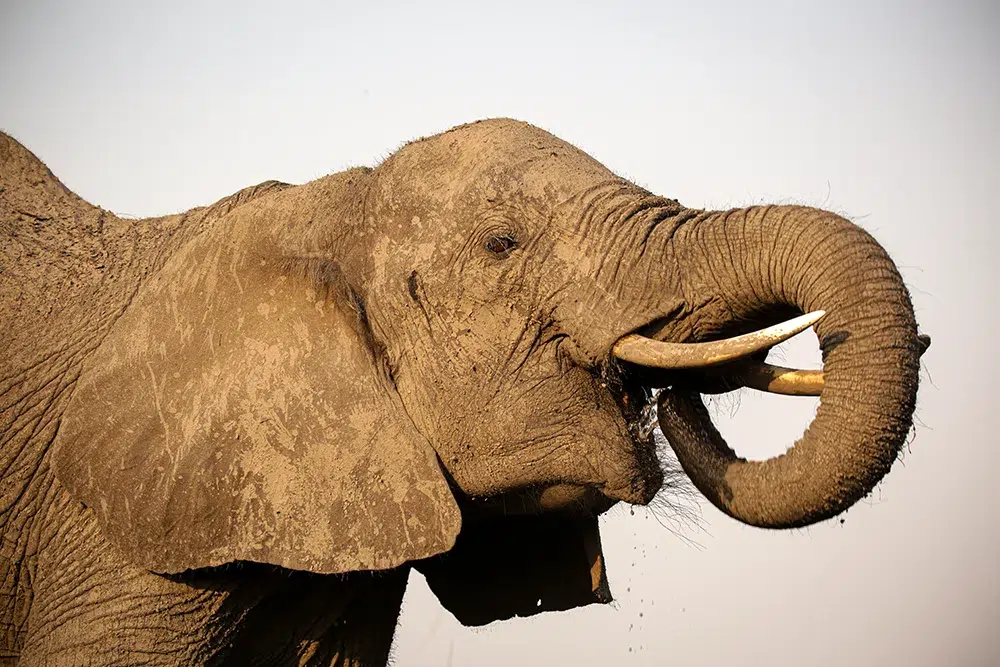
Reaching the Pangolin Voyager via speedboat, we are all looking forward to what’s in store over the next three days. Pangolin Photo Safari Host Pusetso Nteta joins the group from the onset. She will be imparting her knowledge to guests to improve their photography abilities. Or learn skills if they’ve never even taken photographs with a camera and only used a smartphone. There is a special editing suite on board the boat, where guests can tweak their images.
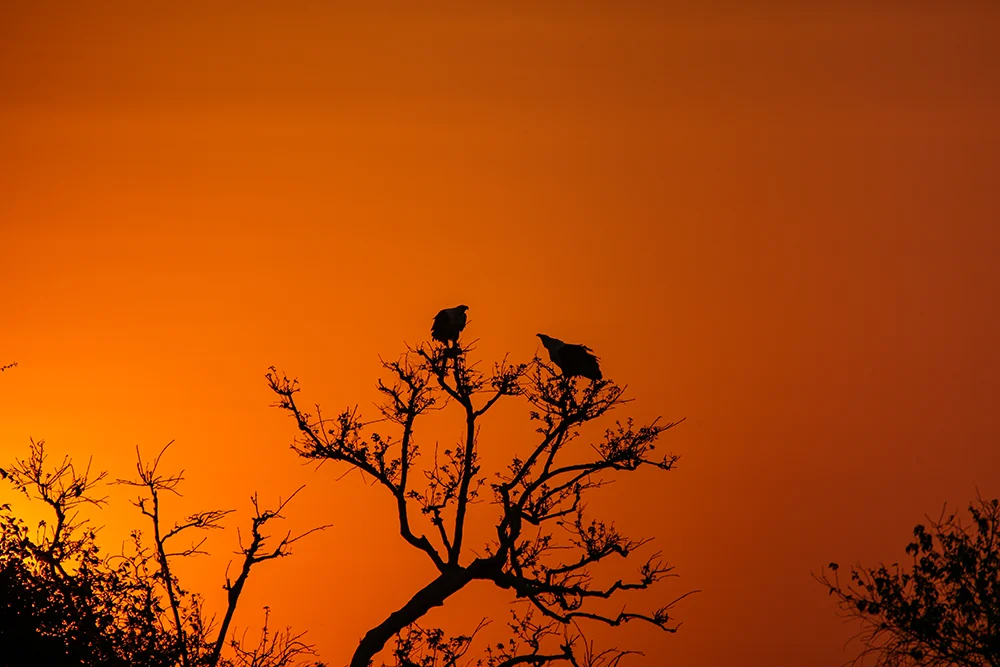
Heading out on our afternoon boating safari, Pusetso is at hand to teach us about manual settings. There is a much greater advantage in taking photographs in this manner. You can really play around with light and get the brilliant pictures you’ve always wanted.
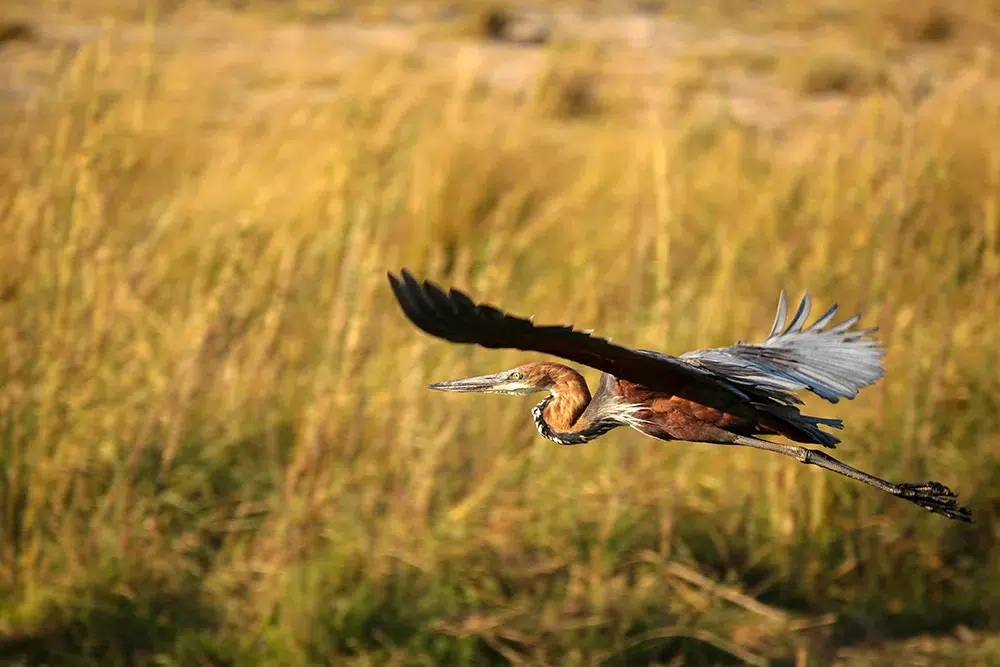
Photographing moving objects isn’t as easy as it might sound, especially birds in flight. Pusetso patiently explains how to manage the camera settings so that the bird is perfectly in focus.
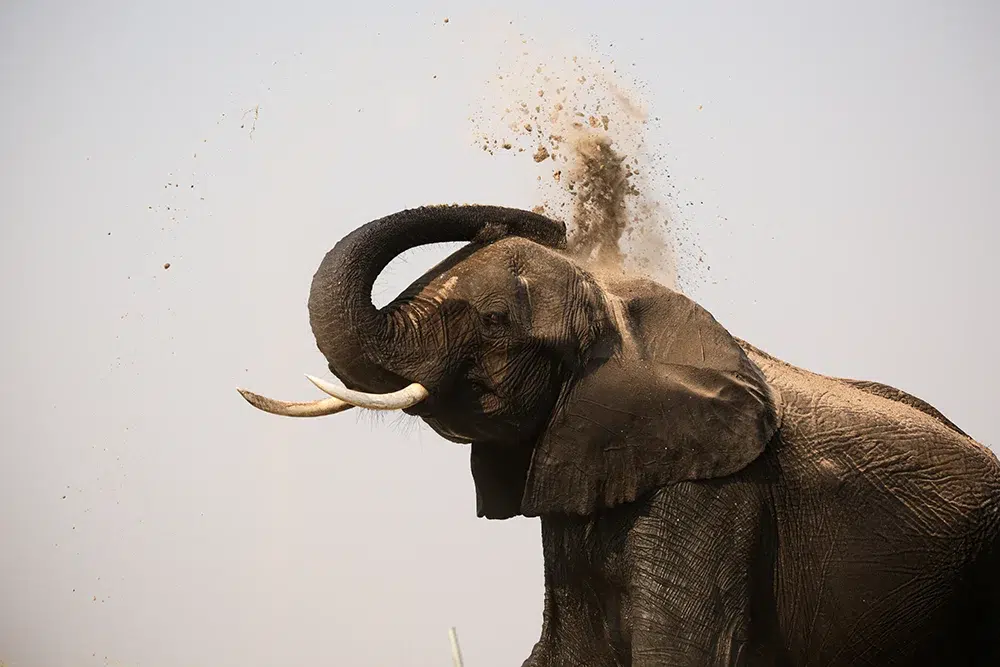
When it comes to wildlife, getting intricate details makes for incredible imagery. In this special part of the Chobe River, elephants are the stars of the show. Sitting a few feet away from one taking a dust bath is astonishing to witness.
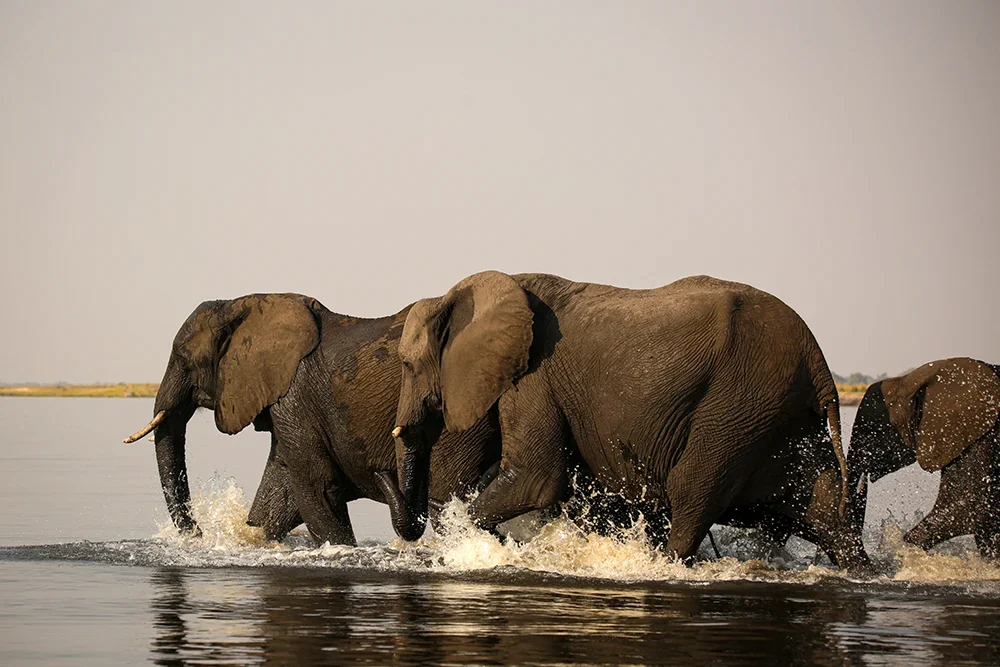
Parked in the specially designed photographic boat, we wait for a breeding herd of elephants to start crossing the river. “Get your cameras ready,” Pusetso encourages. “They will be moving through the water. The lifting of their feet should herald some beautiful shots.”
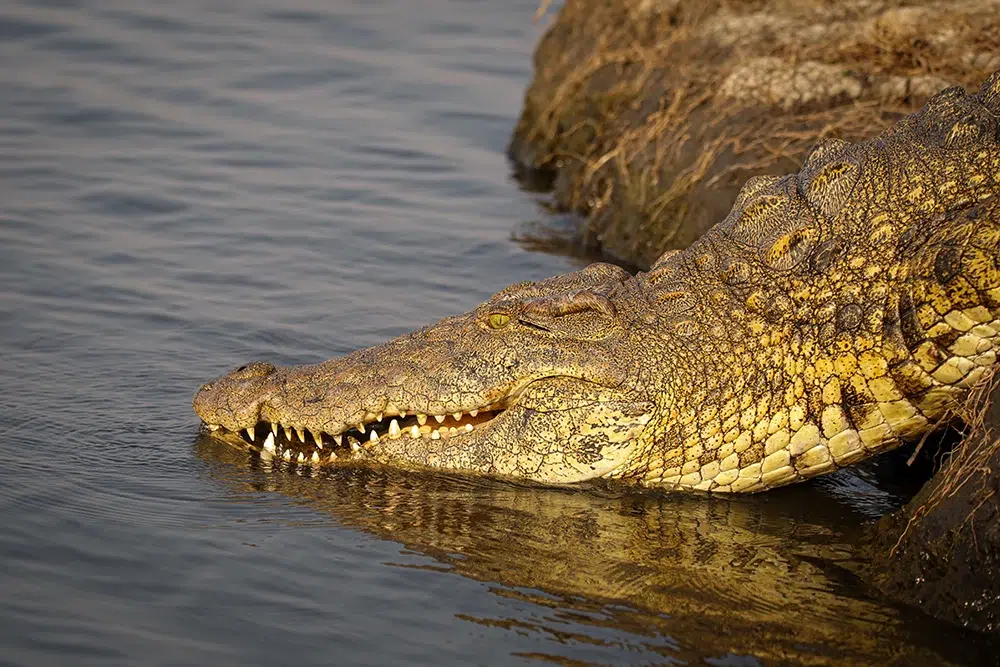
Expecting an animal to do something and being patient about it can reap wonderful rewards. Sitting alongside a Nile crocodile who has his mouth open, we wonder what he’ll do next. He eventually glides soundlessly into the river. Who knew that a crocodile had such interesting patterns on its body as it descends into the water?
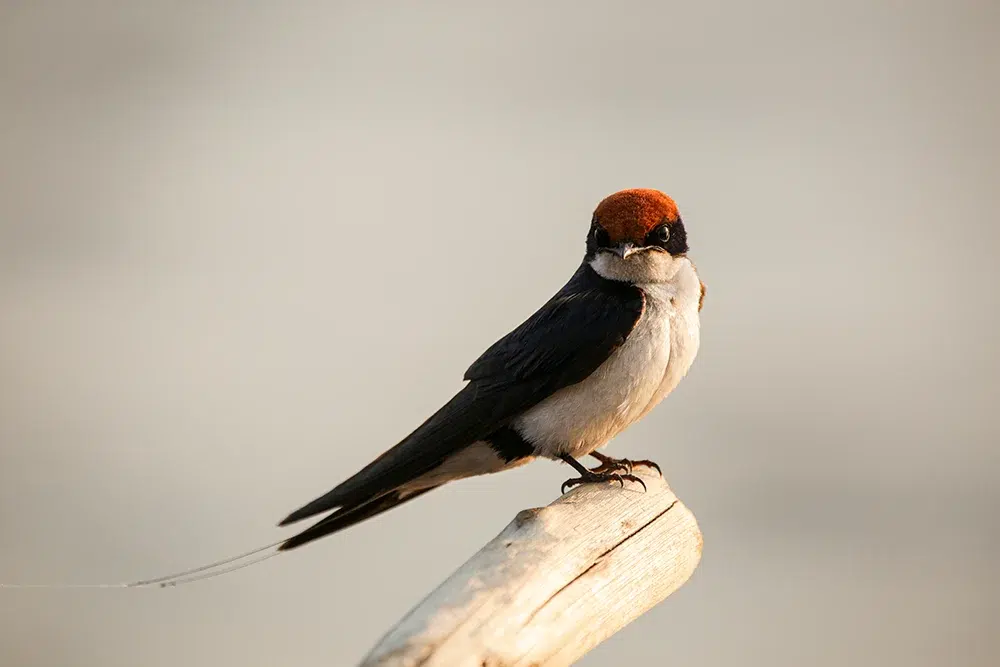
When the wildlife seemingly want their photo taken, they can be very cooperative. A gorgeous wire-tailed swallow uses the boat as cover and ‘poses’ for photographs. In this instance, it’s important to have a steady grip on your camera thanks to the gimbal provided. The eyes must always be in focus.
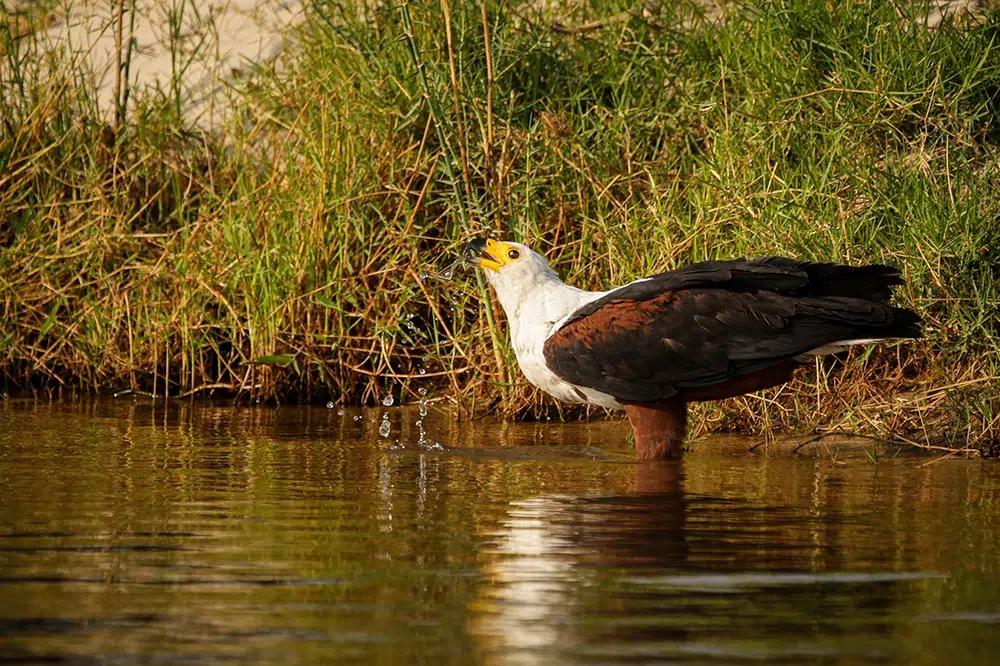
The best part of being on the Pangolin Voyager? The fact that it’s so quiet is because it’s fully solar-powered. It feels like a small, exclusive floating lodge. Everyone arrives together and leaves together as one harmonized group. Whether you’re strangers when you arrive or a family traveling together. The houseboat moves to three different mooring places, and guests really get to experience the finest of the Chobe River.

